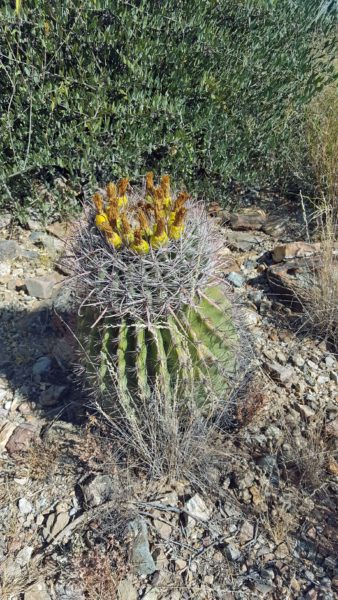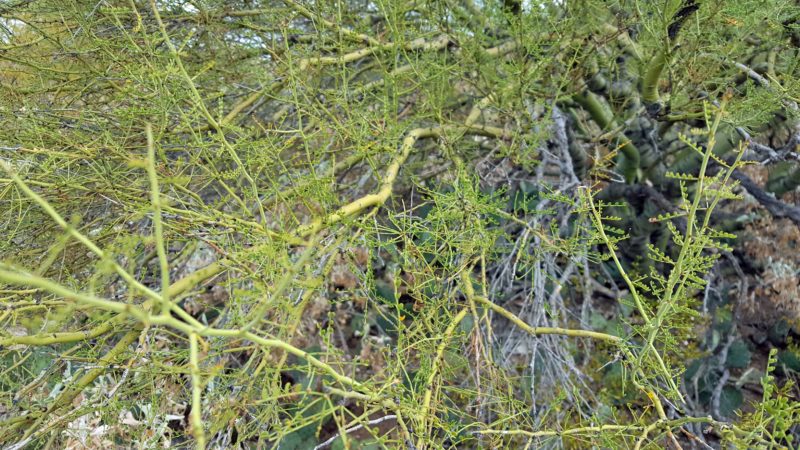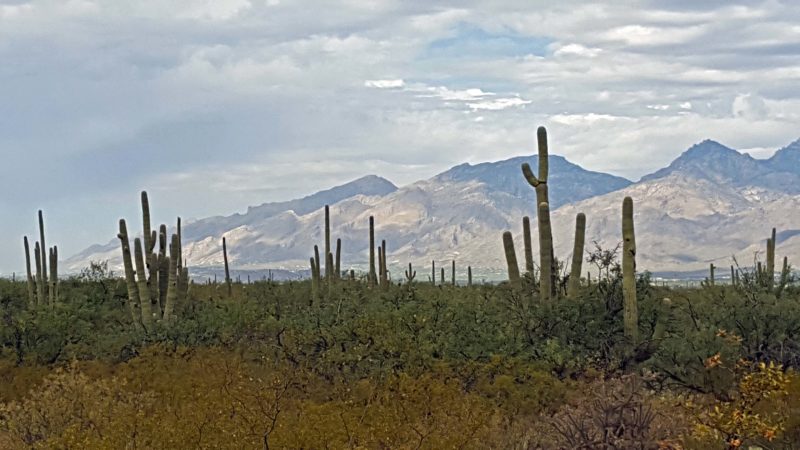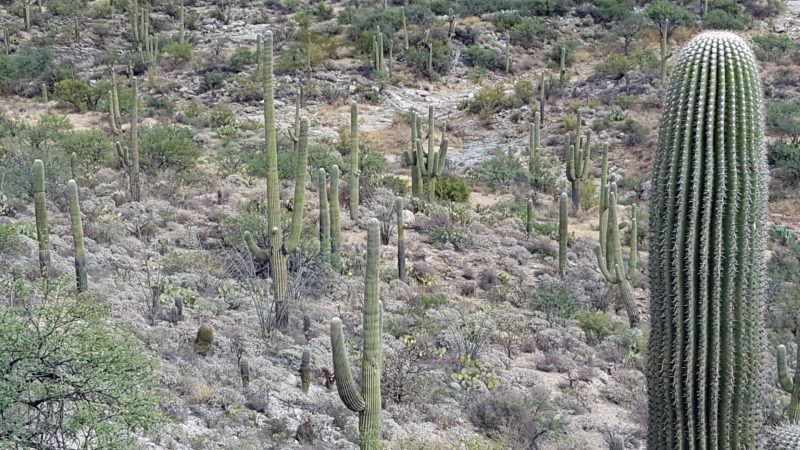Identifying plants
The Sonoran Desert surpasses all other North American deserts in lushness and in variety of life, even though it is one of the hottest and driest regions on the continent. The pictures below are some of the plants I’ve learned to recognize.

Here is a picture of one of the seven varieties of cholla (cho’-yah) cactus. This one is the teddy bear type because it looks soft and cuddly. Prickly pear are on each side, and the tall spire is a young saguaro cactus.

This is a close-up of a jumping cholla. You can see how the dried stalk would break at a joint and “jump” onto you if your clothing brushed against it.

Here’s a barrel cactus with some drying blooms.

Look at that network of protective thorns the barrel cactus puts around itself!

This is an ocotillo (oh-koh-tee’-oh) cactus.

Here’s a close-up of the ocotillo’s vicious thorns. The ocotilla sprouts leaves within days after a rainstorm, then drops them as the moisture disappears.

The bushes with the tiny green leaves on each side of the prickly pear are creosote. Creosote can leave black marks on your pants legs if you brush against it. I didn’t brush against any creosote, but I touched a prickly pear thorn very, very gently to test its sharpness, and it pierced the skin on my fingertip. Yikes! Those thorns are really sharp!

The large, multi-spired plant in the center is an organ pipe cactus. The low, whitish one in the foreground is an agave. Agave roots are used to make tequila.

The palo verde (green stick) tree looks very lacy, probably because of its tiny leaves.

The palo verde got its name because all of it is green–even its bark.

City gardens in the desert (this one is at a museum) don’t look at all like Midwestern gardens.
The saguaro cactus
Saguaro (sah-war’-oh) cacti grow only in the Sonoran Desert in California, Arizona, and Mexico. Saguaros grow very slowly and might be only 1/4-inch tall after the first year. At about 30 years, they begin to flower, and they might begin to sprout their first branches (arms) at about 75 years. The saguaro bloom is the state flower of Arizona. Saguaros can live 150-200 years, reaching 50 feet in height and weighing 8 tons. They are the largest cacti in the United States.

Saguaros must begin their lives under the shelter and protection of a nurse tree in order to survive. This center saguaro is as tall as its nurse tree. The one on the left is just beginning to grow its first arm (above the tree), making it about 75 years old.

Saguaro cacti can grow in forests.

Here’s another saguaro forest. The accordion-like pleats of the saguaro cover a spongy center. The saguaro collects water with a network of roots that lie about three inches below the desert surface. When it rains, the spongy center of the plant fills with water and the pleats expand and flatten as the stalk swells. A saguaro can soak up as much as 200 gallons of water–enough to sustain it for a year.
The desert is a fascinating place, but I’m a hard-core Midwesterner. It’s a nice place to visit, but I wouldn’t want to live here.